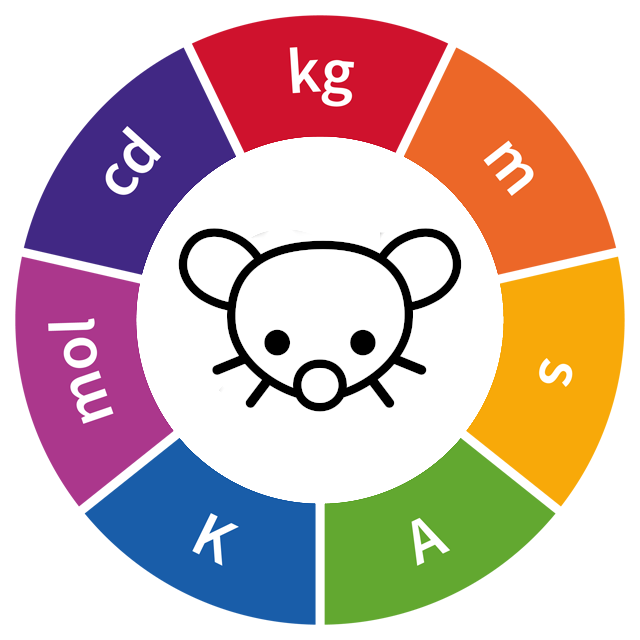Now that’s something I can get behind. The previous post was so random.
And the craziest part is, American customary units are defined by metric. For example, a foot is legally defined as 30.84cm.
Meanwhile, a meter is legally defined as the length of the path traveled by light in a vacuum during a time interval of 1/299,792,458 of a second. Reproducible anywhere, if you have the resources.
I prefer the metric system but have had to learn imperial due to being in the US. The only thing that bothers me is the date format. Prefer month/date/year (or y/m/d). Western calendars are organized by year/month/date. For me, writing 4/24 gives more information up front (time of year) than 24/4 (time of month).
Year.Month.Day also just makes it so you can automatically sort files on a disk by name and get them in chronological order.
But yeah really wish we would move over to metric in the US regardless. Especially for measurement… Heck we technically are using it too but just for “Trade and Commerce”
The choice of water’s melting and boiling point as two points in the Celsius scale is arbitrary, too. Why not choose the melting and boiling point of something like Cesium? It would have been more fun because who doesn’t like Cesium? And it could still use °C. Humans can live in a comfortable 3 degree range in this new system. All of the other units which include temperature can be reconfigured to use this system just as easily as Celsius. We can massage everything so the Joule, etc. is based on 1°C (Cesium, not Celsius!)
I’m not defending the Imperial system. I’m just pointing out the Celsius system is based on arbitrary choices, too.
100°C as the boiling point is hugely useful for things like cooking and hot beverages. The freezing point is useful for road conditions and farming.
Fahrenheit’s arbitrariness feels a lot more arbitrary.
How is memorizing 100 any easier than memorizing 212? It’s the same brain space. When you’re born into the system, it just makes sense. Same with 32 for freezing. Remembering any two arbitrary numbers is really, really easy.
Personally, I’d rather have been raised on metric, but I’m telling you… the Fahrenheit system is no harder than Celsius.
Now fractional inches… Ugh. I do woodworking and I’d much, much rather work in mm, but “every” tool in the US and nearly every enthusiast-level technical drawing is in inches. That and all of my decades of experience is in inches, so I can easily reason about the numbers, and estimate sizes. At least in machining we use decimal inches and not fractions.
Round numbers are easier to remember.
Not only round numbers, but 0 and 100!
0 is obviously a very distinct number.
We use 100 for percentages, money, and all sorts of things.
As someone who wasn’t raised in the imperial system, I always have to try to remember if it’s 32 or 34. I doubt anyone who hears about the metric system is wondering whether it’s 0 or something else like 2 or 10 or whatever.
Freezing water is useful to everyday life, as you need to know if there’s ice on the road. So having that be a simple number makes sense
Kinda like knowing that if someone’s temperature is over 100 they’re probably too hot and there might be a problem. That’s an easy number for me to remember. Do you have a problem remembering 37? Cuz I can remember 32.
The point I was responding to was claiming that the definition of the centigrade scale is arbitrary when compared to everyday life, which its clearly not.
Both obviously claim to have neater numbers for everyday life, and the change from F to C doesn’t really fit in with the argument of decimalisation like everything else, but you do have to ask why americans dont want to modernise like the rest of the world
A lot of us do. Engineers and scientists all use metric. Anyone who uses tools hate the they need to have two different sets of wrenches or whatever else. I personally find it annoying when I hear something in Celsius or metric and need to do a mental conversion (which a lot of us can’t do). I think we should switch over to metric, but a lot of us don’t like the change. And as much as I wouldn’t be that opposed to switching to Celsius, I don’t see much value in that specific metric
The value is in standardisation with the rest of the world, so you wouldnt need to convert.
Ok, but year-month-day (ISO 8601 or RFC 3339) is the only correct way to write dates. The two date formats in this image both suck (and even more so because people often can’t tell which one you’re using).
Eg, 2023-06-30, or with a time and timezone, 2023-06-30T09:54:45-0400.
that’s REALLY useful with official/computer stuff, but for everyday it’s pretty annoying to have to read “the deadline is twenty twenty three, July, 6th” when you already know it’s in July and in 2023. Often the only information you are looking for (the day) gets pushed in the end





